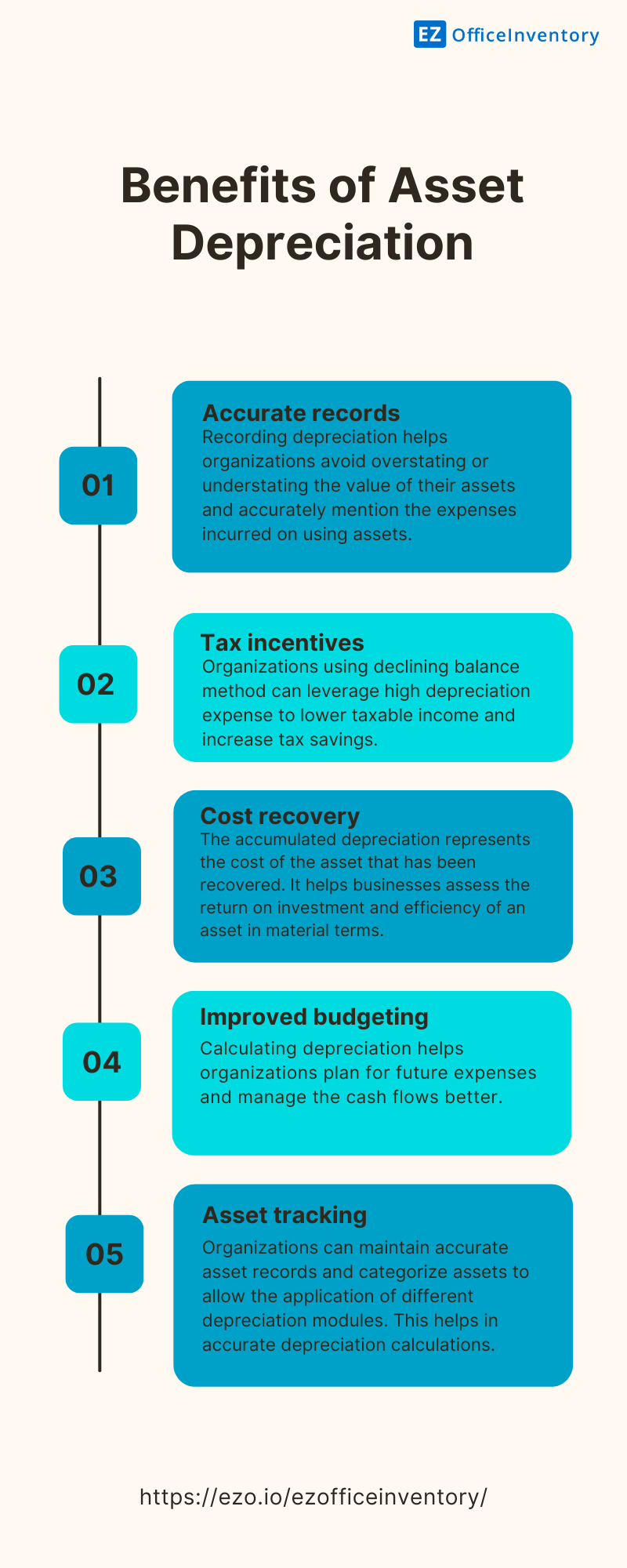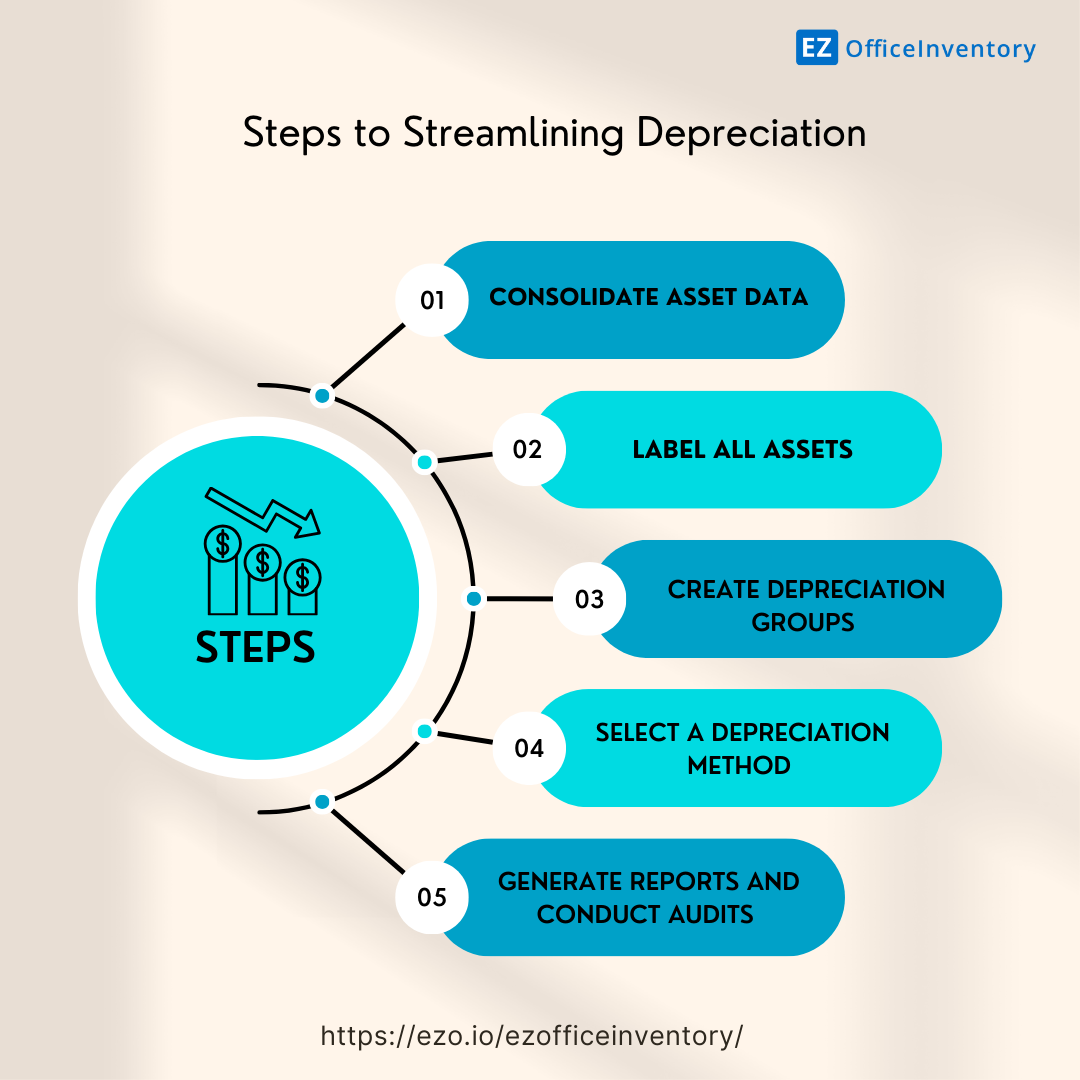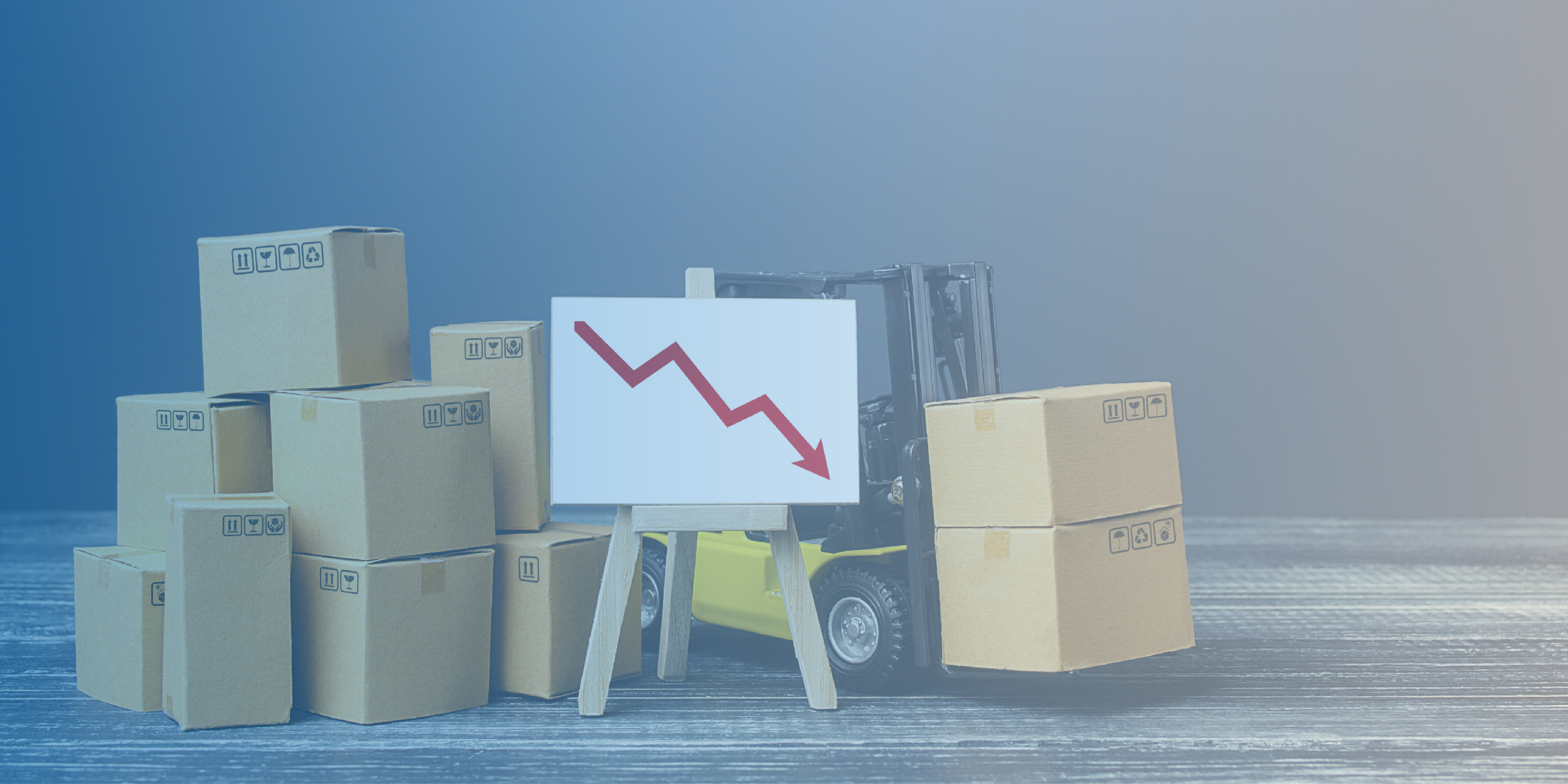Monitoring the performance of assets determines your long-term ROI. Not assessing the correct value of your assets can result in overstated profits – that is not ideal for your organization’s financial standing. Depreciation is an essential cost that, if missed, can contribute to inaccurate profit calculations. Assessing what assets have depreciated – or in simple terms, lost value overtime – helps account for additional costs.
Assets are a major investment for businesses, but their value goes down over time owing to wear and tear. Calculating their exact worth is important because it helps organizations value their assets, file taxes and assess their financial performance accordingly. Considering this, depreciation is a practical way to value your assets and assess your assets’ return on investment accurately.
This blog explains depreciation in detail, and emphasizes how businesses can optimize depreciation management with an asset tracking system.
What is asset depreciation?
Depreciation is a widely used accounting technique that spreads the cost of an asset over its useful life. It represents how much value an asset has lost over time and helps calculate an asset’s final salvage value.
Fixed and long-term assets are more likely to depreciate overtime due to obsolescence and frequent use. So, it is important that businesses keep evaluating their assets from time to time to assess their performance and use. This helps organizations predict the remaining useful years of an asset and assess how well they can perform operational tasks. Assets that need consistent inspections and audits to account for depreciation include:
| Type of assets | Examples |
| Heavy machinery | Cranes, bulldozers, excavators, loaders and mechanical equipment |
| Vehicles | Cars, trucks, dumpster vans |
| Buildings | Office infrastructure |
| Furniture and fixtures | Desks, chairs, shelves, cabinets etc., |
But why do assets depreciate? The major reasons include:
- Wear and tear
- Aging
- Technological obsolescence
- Harsh weather conditions
- Natural disasters
Criteria for depreciating an asset
Calculating the depreciation of fixed assets helps organizations assess their exact value to see how long an organization can benefit from them. However, according to the Internal Revenue Service (IRS), not all fixed assets are eligible for depreciation – and hence tax benefits can’t be claimed for them. In order to qualify for depreciation, an asset must fulfill the following criteria:
- You must be the owner of the asset
- The asset must be utilized in business or income producing activities
- It must have a useful life of a year or finite life
This helps businesses decide what assets experience depreciation so they can be inspected regularly for their condition. Some assets that do not depreciate include leased property, current assets like cash in hand, land and stocks.
Types of depreciation and their calculation
There are different types of depreciation methods that a business can use. Each type evaluates assets differently based on different calculation methods.
The long-term aim is to gain tax incentives by using accelerated depreciation methods resulting in higher depreciation expenses. Some commonly used methods for depreciation typically include:
1. Straight line
Straight-line method is the most basic way of recording depreciation. It reduces the value of assets by a fixed amount each year until the asset reaches its salvage value. The formula used for calculating depreciation through straight-line method is:
Annual Depreciation Expense = (Cost of Asset – Residual Asset) / Useful life
In this formula:
- Cost of asset is the original purchase price at which the asset was bought
- Residual value is the approximate value of an asset at the end of its useful life
- Useful life is the number of years that an asset is expected to last.
To calculate the book value of the asset i.e., the annual depreciation amount each year, you can simply use this formula:
Book Value of an Asset = Cost of Asset – (Annual Depreciation x Number of Years)
This measure is considered the most appropriate if you want to depreciate buildings or property.
2. Declining balance
This is an accelerated method of depreciation that, unlike the straight-line method, spreads the cost of an asset over its useful life in a declining manner. This means more value is depreciated in the initial years as opposed to the end years of an asset. The formula used for this is:
Annual Depreciation Expense = Book Value at the Start of Year x Depreciation Rate
This method is based on the assumption that an asset has a finite life and experiences more depreciation in the early years. Given this assumption the declining balance method is useful for heavy machinery or equipment that are expected to be used over the first few years.
3. Sum of the year’s depreciation
This is an accelerated depreciation method. Based on this method, an asset depreciates more in the early years than in the end years of its useful life. This is specifically useful for businesses who want to leverage the value of their assets in the early years. The formula is:
Annual depreciation expense = (Remaining Useful Life/ Sum of the Year’s Digit) x Cost of the Asset – Residual Life
Sum of the Year’s Digit = [n x (n-1)] / 2
Here n stands for the number of years.
This method is used less rigorously than the declining balance method, and mostly for assets that want to benefit from tax incentives in the short run by reducing taxable income.
4. Units of production
Using this depreciation method, an asset is depreciated based on its actual usage i.e., the number of units of production it has helped produce. The depreciation expense is calculated each year contingent upon the quantity of production over a useful time period. The formula used for this is:
Annual depreciation expense = [(Cost of the Asset – Residual Value) / Units of Production ] x Units Produced
Asset depreciation examples
Following are some examples of each depreciation method explained above:
| Depreciation Type | Example with depreciation calculation |
| Straight line | For instance, a computer has a depreciable life of 5 years and a value of $25000, with a salvage value of $5000. Based on this, the annual depreciable amount will be $20000 and annual depreciation $4000 (20000/5). |
| Declining balance | Using the example above, in year one, the depreciated amount will be $10000 (25000 x ⅕). In year two it will be $3000 [(25000 – 10000) x ⅕] and so on. |
| Sum of the year’s depreciation | Here, we will calculate the base for depreciation by summing digits one through five (1+2+3+4+5 =15). For the first year, we use 5/15 and second year 4/15, and so on. The depreciation amount for first year will be (20000 x 5/15) = $6666.67 and (20000 x 4/15) = $5333.33 where $20000 is the purchase price- salvage value (25000 – 5000) |
| Units of production | Let’s suppose the units of production are 100,000 and units produced are 20000. So, the depreciation will be (20000/ 100000) x 20000 = $4000. The first year’s depreciation will be [25000 – (4000/1)] = $21000. |
Benefits of calculating depreciation
There are several ways calculating depreciation helps improve the overall productivity of organizations. Some direct benefits include:
- Accurate records
- Tax incentives
- Cost recovery
- Improved budgeting
- Asset tracking and management
The following image explains these benefits in detail.

Factors to consider for streamlined depreciation
By setting up a consistent depreciation schedule, organizations can keep track of the current value of capital owned and optimize asset procurement, lifecycle, and retirement. As assets lose value over time, depreciation management helps you maintain accurate financial records and file taxes easily .
It also helps you make strategic decisions regarding when to buy retired assets, replace them, and when new assets need to be purchased.
The best way to ensure efficient depreciation management is to automate asset tracking for your organization. By keeping a comprehensive record of all your assets, you can record their depreciation over time.
A cloud-based asset tracking system is a viable option to utilize so you can keep a history of depreciation. While deciding on a depreciation management strategy using such a system, you can follow a few simple steps, including:
1. Consolidate asset data
The first step is to record all your asset data on a single platform by gathering and centralizing information – forming a comprehensive database. Entering asset information into the system is critical to ensure that you are able to centralize all data, including recording details like asset name, asset identification number, model number and more. Recording procurement details is the most crucial step because without this information you will not be able to calculate an asset’s depreciation.
Depreciation calculation is majorly dependent upon accurate and up–to-date information. This includes details related to initial cost, salvage value and useful life of assets. Consolidating this information helps reduce the risk of errors in data recording. It also allows you to apply various depreciation methods to the data to allow accurate depreciation calculations.
2. Label all assets
Labeling assets is an elaborate process that requires generating asset tags. These tags contain essential asset information that is accessible with a simple scan. Documenting all business assets and asset tagging are essential parts of these steps as they help businesses maintain the assets in the right quantity and quality.
The barcode labels should include critical asset information, like procurement date and calculated depreciation. These details can be retrieved with a quick scan allowing users to stay updated in real-time. A tracking software enables you to seamlessly upload asset details by making it easy to generate and deploy barcodes from one place.
Organizations use a variety of assets that are placed in different categories, which in turn determines the depreciation method that must be applied to them. Barcode labels serve as unique identifiers enabling organizations to differentiate assets and therefore, calculate depreciation accordingly.
Similarly, asset labels help determine where and how an asset depreciates based on its location; this is because some assets are likely to experience more depreciation than others owing to their physical location.
3. Create depreciation groups
Once you have all the asset data in one place, the next step is to refine data in order to calculate depreciation. A tracking software enables you to filter data in the form of groups for streamlined asset depreciation. Depending on the organizational workflow, you can create groups based on different criteria like office locations or even departments.
Having items in groups makes it easier to run asset depreciation by automating the whole process. For example, you want to start a depreciation schedule for a New York office. Begin by creating a group Heavy Machinery-New York Office and add all the relevant items to it.
You can even create smaller groups for the Administration, Finance and Marketing departments. Using these groups, you can apply a depreciation method to them so accurate depreciation can be calculated.
4. Select a depreciation method
Selecting an appropriate depreciation method is critical to ensure that you evaluate your assets based on true numbers. Each depreciation method is suited to a different asset based on a couple of factors, including:
- Nature: The asset will have varied patterns of wear and tear considering their quality and type. For instance, whether they are tangible like a piece of land or building or intangible like a patent or copyright.
- Asset usage: The use of some assets determines how it will depreciate. For assets that have a consistent usage, a straight-line method is likely to be the most appropriate. For assets that are likely to be used more frequently in their initial years, a declining balance method might work the best.
- Residual value: Depreciation of assets that have a high residual value can be calculated better using straight-line methods to evenly spread the value of an asset over time.
These factors determine how and when an asset is to be depreciated. The selection of a depreciation method is based on the specific characteristics of assets.
5. Generate reports for data analysis
An asset passes through various stages throughout its life cycle that need to be documented. An asset depreciates differently during these stages based on its usage – each posing a unique financial impact. To get a clearer picture of your depreciation management, it is advisable to generate reports and graphs.
An asset tracking software enables organizations to prepare depreciation reports and graphs whenever needed. These in-depth reports are beneficial for organizations wanting to have a better understanding of their financial standing. For instance, managers can consolidate depreciation data and present it in an easily understandable format. The reports can be customized to cater to a particular aspect of operations, like assessing the depreciation of assets in the Heavy Machinery- Manhattan office group.
Reports are an insightful way for organizations to forecast future expenses while analyzing data for more informed decisions.
6. Run depreciation audits
Depreciation expenses are one of the most critical expenses that impact business income. Ensuring that they are recorded correctly is one of the most viable ways to mitigate distortions in profit calculation. This is where depreciation audits come into play! They help automate the depreciation management process – enabling organizations to keep accurate financial records.
A tracking software keeps a record of real-time depreciation measures that can be reviewed anytime. Simply assess the depreciation rates in order to check whether they have been applied correctly to the right assets. This is a good way to spot any miscalculations before you prepare your final income statements or file for taxes.

Depreciation management for enhanced productivity
As discussed above, depreciation is an essential component of everyday organizational operations. It makes up a large portion of your expenses and determines the income your organization generates. Not only this, but depreciation also indicates the useful life of your assets, what stage of the lifecycle is your asset at, and how well it is likely to perform in the future.
Keeping these benefits in mind, it is important to employ a system that can help improve and channelize your depreciation management and in turn asset management. An asset tracking system is a wise choice in this regard. It comes equipped with capabilities that enable you to centralize asset data, apply depreciation models, automatically calculate depreciation and generate reports from time to time to see the assets’ impact on your organizational performance.
So, streamline your operational processes today and never miss out on depreciation details for enhanced visibility of your assets!
Frequently asked questions (FAQs)
1. What depreciation method is the best?
There is no one particular depreciation method that works the best. It depends on the nature of your assets and organization that determine what method will suit your organizational needs the best. A method that is applicable to an organization’s assets and is the simplest for them to calculate depreciation is typically considered the most suitable.
2. What is fixed asset depreciation?
Fixed asset depreciation relates to spreading the cost of wear and tear and obsolescence of fixed assets over the asset’s useful years. The aim of depreciating fixed assets is to match the cost of a fixed asset with the return it generates to yield maximum benefits.
3. When to start depreciating an asset?
It is ideal to start calculating depreciation for an asset as soon as it is put to use or is ready for its intended use. An asset is considered ready for depreciation when it has started to be used for income-generating purposes.
4. What assets can be depreciated?
Not all assets can be depreciated. Assets that can be depreciated include tangible assets, such as land, buildings, heavy machinery and equipment, computers etc. Assets that help generate revenue are eligible for depreciation calculations.







